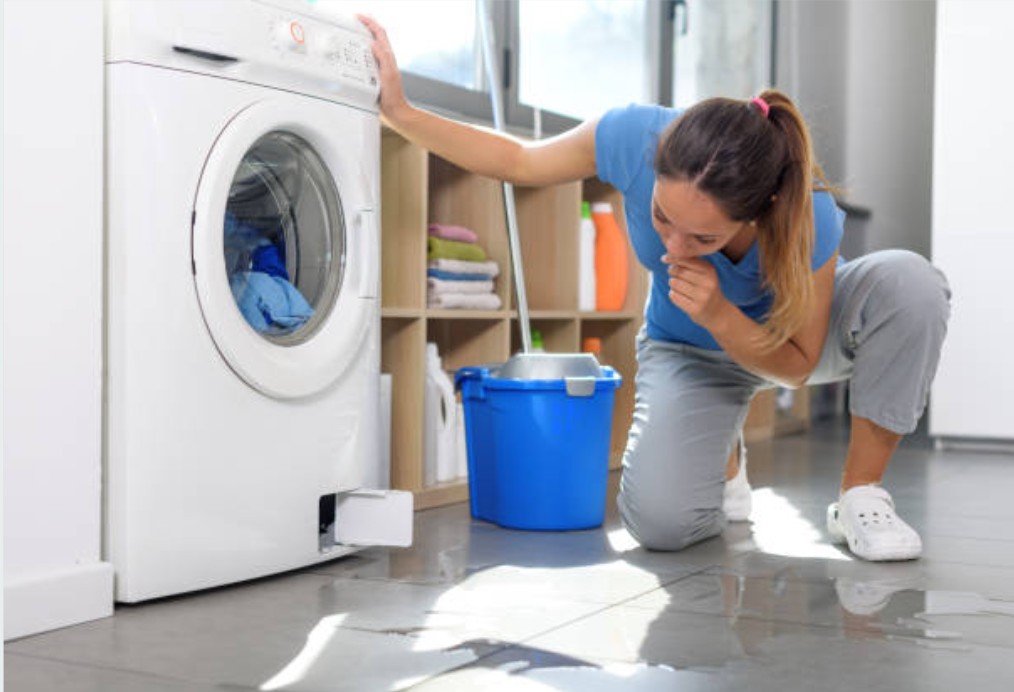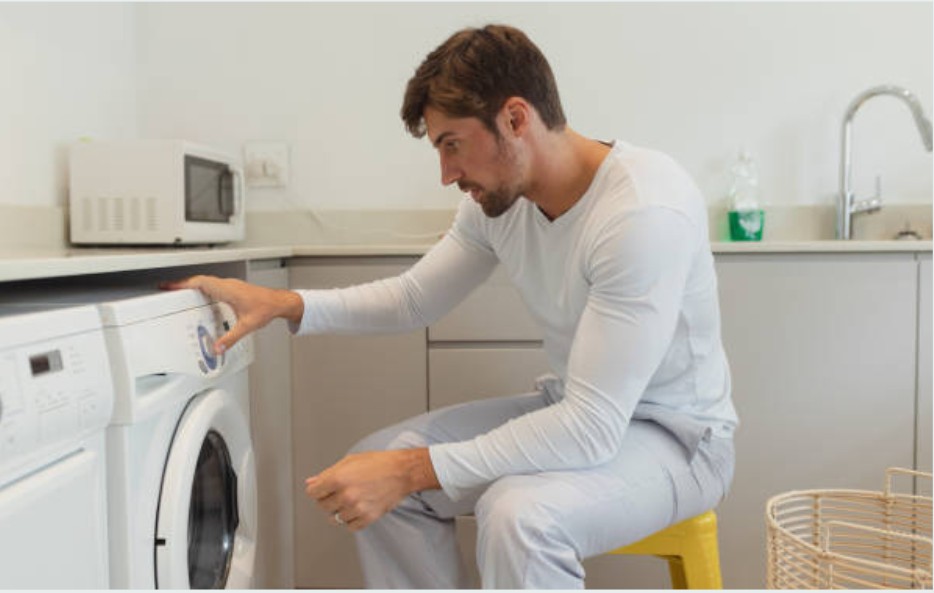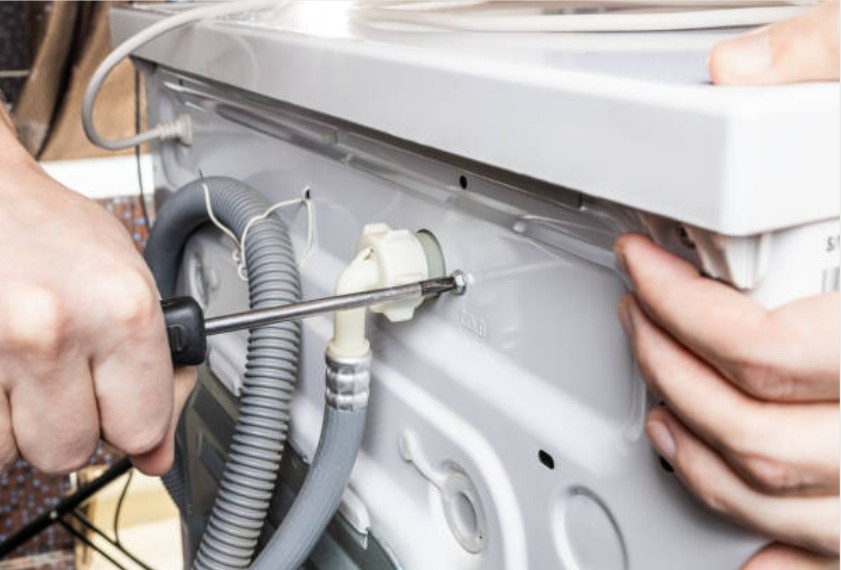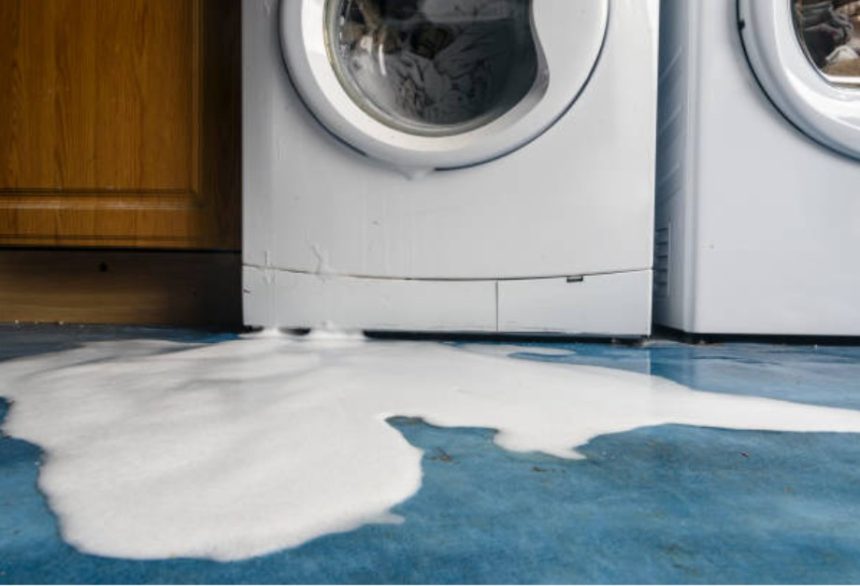A puddle forming beneath your washing machine can be alarming, especially when you don’t know what’s causing it. While it might seem like a minor inconvenience, a leak from underneath could point to a more serious issue that needs urgent attention. One of the most common homeowner questions is: “Why would a washing machine leak from underneath?”
In this guide, we’ll dive deep into the causes of this problem, explain how to diagnose it, offer practical repair advice, and share tips on preventing future leaks—all tailored for UK households.
Noticing a Leak? Start with a Proper Diagnosis
Identifying that there’s water leaking is one thing—figuring out where it’s coming from is another. Many people assume the leak must be coming from the bottom because that’s where the water pools, but leaks can travel from other parts of the appliance and settle at the base.
How to Identify a Leak Under Your Washing Machine
Start by:
- Looking for puddles or damp patches around and underneath the machine after a wash
- Noting whether the water is clean, soapy, or dirty gives clues about the source
- Observing when the leak happens — during filling, washing, rinsing, or spinning
The type and timing of the leak are important indicators of where the fault lies. For example, a leak at the start of the cycle may suggest a problem with the inlet valve, whereas a leak during spinning could point to a drainage issue.
What Areas Are Most Likely to Leak?
Washing machines are made up of several components, and the most leak-prone ones include:
- The door seal, particularly in front-loading models
- Drain hoses, especially at connection points
- The pump or drum seal, both located near the bottom of the machine
- The detergent drawer, where overflow or blockages can push water internally
Is It Safe to Use a Leaking Washing Machine?

It’s risky to continue using a leaking machine. Water and electricity don’t mix, and continuing use could cause electrical faults or even pose a fire hazard. If you’re unsure of the cause, unplug the machine immediately and begin your inspection or contact a repair professional.
Why Would a Washing Machine Leak from Underneath?
There are many potential culprits, but let’s explore the most common causes for a leak from the base of your washing machine:
Damaged or Loose Drain Hose Connections
The drain hose carries wastewater out of your machine. Over time, the hose can become brittle or crack, especially at the joints. It might also loosen due to vibrations, causing water to spill during the draining process. If the hose is kinked or blocked, water could back up and leak at the connection points.
Faulty Water Pump or Cracked Pump Housing
The water pump plays a crucial role by pushing wastewater out during the spin and rinse cycles. Located at the bottom of the washer, it’s a common source of leaks. Cracks in the pump housing, a broken seal, or a worn-out impeller can all allow water to escape. You might hear strange grinding noises or notice slow draining if the pump is failing.
Worn Door Seal (Especially in Front Loaders)
The rubber door gasket in front-loading machines can degrade over time due to mould, mildew, or overuse of strong cleaning chemicals. A tear or distortion in this seal can cause water to leak down the front and settle underneath the washer, making it look like an underbody leak.
Leaking Detergent Drawer or Over-Foaming
Too much detergent or the use of low-quality products can cause excessive suds. This may result in over-foaming, leading to leaks from the detergent drawer or internal overflow. Some detergent may even splash back into internal compartments, causing internal leaks that surface at the bottom.
Broken Internal Tub or Drum Seal
In rare cases, the internal drum seal (which separates the washing tub from the motor and housing) can wear out. When this happens, water seeps out and leaks into the bottom housing of the machine, eventually pooling underneath. This kind of leak usually happens in older machines or those with high mileage.
Malfunctioning Inlet Valve or Hose
The water inlet valve, located at the back of the washer, controls the flow of water into the machine. If the valve fails or the hose becomes loose, water can slowly leak from the back and run down to the floor. A steady drip behind the machine could go unnoticed until it’s visible as a pool underneath.
Quick Checklist of Most Common Causes:
- Loose or cracked drain hose
- A faulty pump or pump housing
- Torn or mouldy door seal
- Overflowing detergent drawer
- Internal drum seal failure
- Leaky inlet hose or valve
How to Pinpoint the Exact Leak Source

Finding the source of a leak is sometimes the hardest part of the process. Here’s how to narrow it down safely and effectively:
Visual Inspection Tips
Unplug the appliance and move it slightly away from the wall. Check:
- The drain hose at the rear and underside
- The bottom panel for signs of dripping or mineral buildup
- The door seal for visible tears or water trails
Use a torch and paper towels to track slow leaks and pinpoint wet spots.
Run a Short Diagnostic Cycle
Select a short or rinse cycle and keep a close eye on the machine as it runs. Watch for water leakage during:
- The fill stage – possible inlet valve leak
- The wash or rinse stage – possible drum or seal issue
- The spin or drain stage – likely pump or hose failure
Listen for Unusual Sounds
Odd noises can be telling. For instance:
- A grinding noise might point to a failing pump
- Sloshing without proper draining could suggest a blockage or a cracked hose
Document what you see and hear — it’ll help if you decide to call a technician later.
DIY Fixes vs Professional Repairs
Some washing machine leaks can be fixed at home, while others require a trained hand.
Which Leaks Are Safe to Fix Yourself?

You may be able to tackle:
- Reconnecting or replacing a loose hose
- Cleaning out a clogged filter
- Removing mould or debris from the door seal
- Replacing a detergent drawer
These tasks usually don’t involve major disassembly or risk of electric shock if the machine is unplugged.
When Should You Call an Appliance Technician?
Leaks related to:
- The pump
- Internal drum seals
- Cracked tubs or housing
- Malfunctioning inlet valves
…should be left to the professionals. These parts are complex and expensive, and incorrect DIY can cause more damage.
Table: Common Leak Causes – DIY or Call a Pro?
| Leak Source | DIY-Friendly | Technician Required |
|---|---|---|
| Drain hose (loose or cracked) | ✅ | |
| Dirty or torn door seal | ✅ | |
| Overflowing detergent drawer | ✅ | |
| Internal pump failure | ✅ | |
| Inlet valve malfunction | ✅ | |
| Drum/tub seal damage | ✅ |
Preventing Future Washing Machine Leaks
Proper care and regular maintenance are essential to keep your washing machine leak-free.
Routine Maintenance Tips
- Inspect hoses every 6–12 months for signs of cracks or leaks
- Clean the door gasket and detergent drawer monthly
- Run an empty 90°C maintenance wash with a machine cleaner to remove internal buildup
Best Practices for Detergent and Loading
- Avoid using too much detergent—it leads to excess suds and blockages
- Stick to recommended load sizes—overloading stresses seals and the drum
- After each wash, leave the door and drawer open to air dry and prevent mould
Care Tips for a Leak-Free Machine:
- Clean the filter every month
- Use high-efficiency detergent sparingly
- Replace worn hoses proactively
- Check connections after moving the appliance
- Schedule a professional check-up every 2–3 years
Conclusion: Don’t Ignore That Puddle!
So, why would a washing machine leak from underneath? The answer lies in a range of possibilities—from worn seals and hoses to failed pumps and overuse of detergent. While some leaks are simple fixes, others require professional expertise.
Acting fast can prevent damage to your appliance, flooring, and even nearby furniture. With regular maintenance and proper use, you can keep your washing machine running efficiently—and leak-free—for years to come.
FAQs About Washing Machine Leaks
Can a Blocked Filter Cause a Leak?
Yes. A blocked drain filter can cause water to back up inside the machine, eventually overflowing and leaking out of the base.
Does Hard Water Affect Washer Leaks?
Absolutely. Hard water leads to mineral deposits on internal valves and hoses, making them more prone to leaks and failure over time.
What If the Leak Only Happens During the Spin Cycle?
That typically suggests an issue with the drainage system, such as a cracked hose, worn pump seal, or faulty drum gasket that leaks under high-speed vibration.






